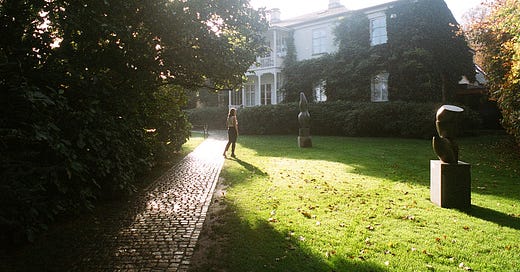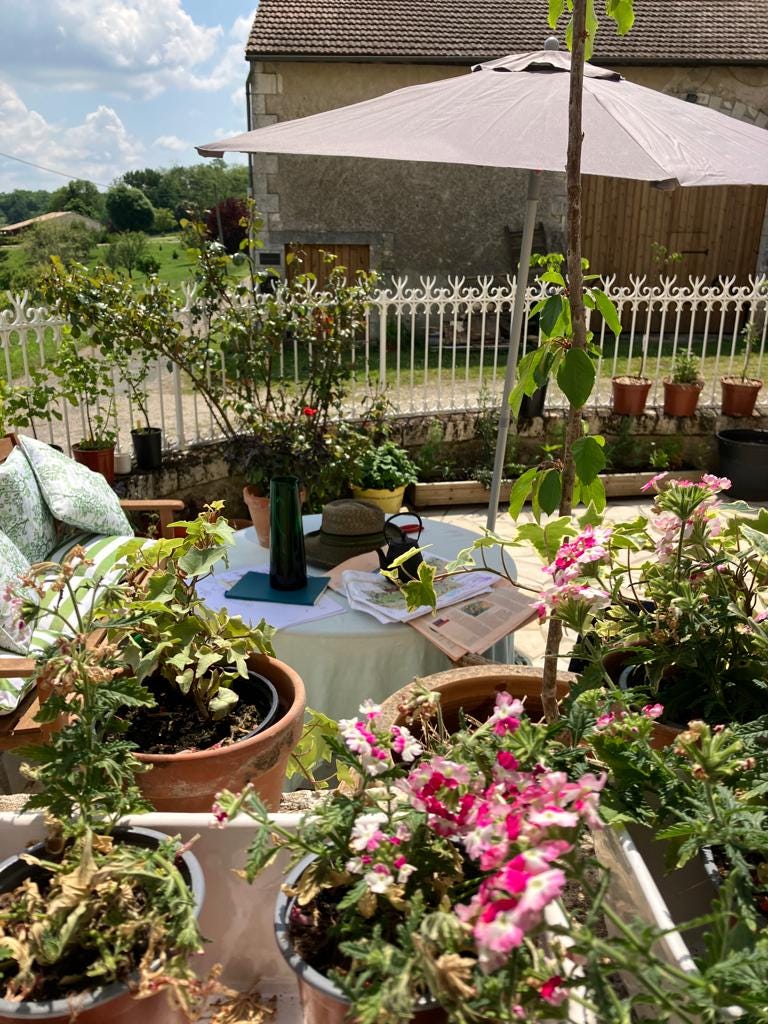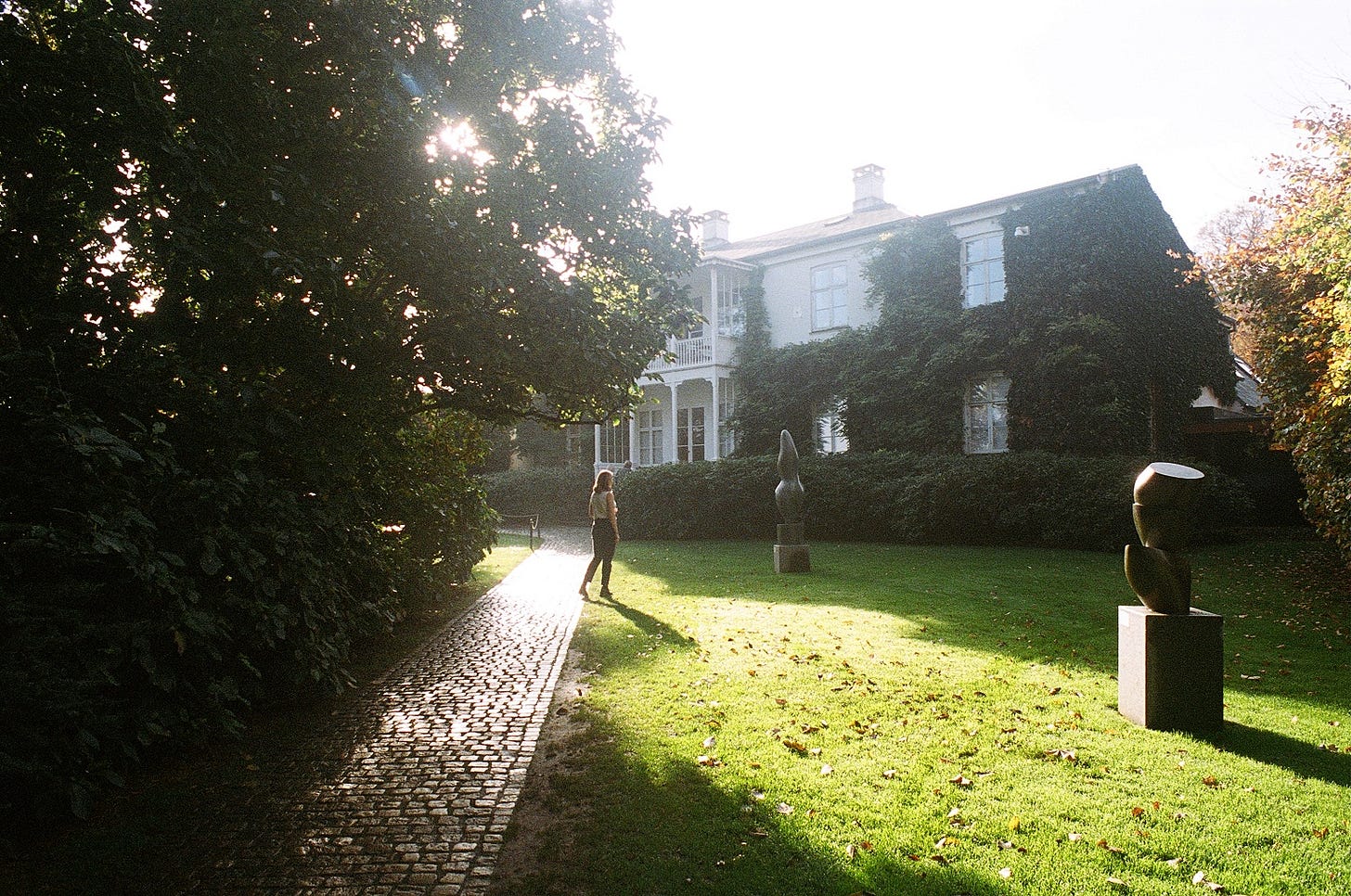Over the last few days, I’ve been re-reading the third book in Deborah Levy’s Living Autobiography series, Real Estate. I read it for the first time last year and mustn’t have paid enough attention because I got so much more from it this time around that I am tempted to re-read every book I own.
The theme at its heart is the author’s dream of real estate — her unreal estate, as she puts it. In her portfolio of dreamed-up properties is a grand old house with an egg-shaped fireplace and a pomegranate tree and circular stairways and mosaic floors. “A loving house” that exists only in her mind, while in real life she makes do with the long-term perch that is her North London flat. The flat where she raised her daughters and her prized banana plant, and where she keeps her three e-bikes in the garage downstairs.
Over the last few years, I’ve become quite familiar with dreams of home ownership, first as a witness to my mum’s journey. From the dreaming to the hunting to the finding, to the marathon of buying, and now, finally, to living in a home that was once all in her imagination and is now all hers.
More recently though, I’ve been grappling with my own unreal estate which seems a lot further from becoming real than either Deborah’s or my mum’s, but that nonetheless lives rent-free in my mind.
The thing about my dreams of property is that they aren’t just my own. If they were, I would be happy for them to remain make-believe for a little while longer given my — as Deborah puts it — “precarious income”. But Andy has wanted a house for years. He started looking at 26 and at 32 the search continues.
It has paused at times, but then we’ll get an email from our landlady telling us for the second time that no, Annabel cannot paint the purple bedroom walls a more neutral colour, and the burning desire for a house will rear its head once more. Writing this paragraph out makes me think of an article I read recently by urban planner Riley Flannigan:
To the typical Australian, our collective sense of accomplishment, stability and security is inseparable from home ownership. While all human beings understandably want the freedom to paint a wall, put up some pictures and get a horse-sized dog without having to prostrate yourself before a landlord, this idea of crippling amounts of debt being the one-and-only road to security and stability is a very Australian psychopathy…
Hmm. Feeling very seen. But no less enchanted by the idea of a home where the walls are all the right colours. Obviously, home ownership comes with its challenges — Flannigan very colourfully describes the Kafkaesque, vampire-ridden process of buying and selling real estate that actually leaves us a lot less free, secure and stable than we might have thought — but it’s fun to imagine, isn’t it?
Describing her own unreal estate, Deborah says, “The wish for this home was intense, yet I could not place it geographically, nor did I know how to achieve such a spectacular house with my precarious income.”
Like Deborah, when I imagine my make-believe home, I can’t quite place it. In London would be nice, since that’s where my life is right now, but a London that is in a perpetual loop of spring and summer. Or maybe somewhere wild like a forest or by a lake or the beach.
Wherever it is, the image that comes to mind is very green and surrounded by trees and the house is white and two stories tall. Or maybe it’s a 1960s bungalow made from dark wood and big panes of glass. Or both at the same time and actually just Louisiana Museum in Denmark. Either way, there’s always sunlight flooding in and the floor is never too cold. Not quite achievable in this economy, but since we’re imagining…
Also in my unreal estate portfolio, but back down on Earth this time, is an abandoned building around the corner from my flat. It looks a bit like a two-layered, cream-coloured cake, with arched windows and a big plot of land that is overgrown and full of junk.
It might have been quite grand not too long ago but now the paint is peeling and there’s a mean wire fence around it with signs saying CCTV in operation. When I looked it up online, a local mum from 2011 had posted on a forum about how sad she was that the building — which had been a garden centre for 200 years before being sold — now sat empty. It still sits empty 12 years later.
This property isn’t my dream home, but I’ve been dreaming of it more than my slightly blurry, extremely over-budget imaginary one, and of all the things that could be done with it if only I could track down the owner and get the council to answer my emails.
For one, a real jungle could be made of the land — native trees, fruit trees, garden beds with berries and veggies and flowers, a bee hotel (!). That’s before even mentioning the building which could serve so many purposes it actually makes me dizzy thinking about it. Classes, a café, a space for making things, a place for kids to come after school. A music venue, a meeting place, a place to work that’s not your own dining room table.
It wouldn’t be my personal dream home but it could be a dream community home, which, although it doesn’t fix the purple wall problem in my current perch, does sound quite nice. And now that I think about it, would grant all my commune wishes from last week’s newsletter.
Luckily, this property has the benefit of being real and being right next to a real estate agent. So the other day I went in and asked them whether they knew anything about it. “Yes, we know the owner — do you want to rent it?” they asked. “No”, I told them, “I don’t have any money. But I hate seeing it empty.”
Obviously, GDPR got in the way of them handing the owner’s contact details straight over to me, but they told me to come back in when the boss was back from holiday and it felt like more progress than I have ever made in my journey for property, real or otherwise. I’ll be dropping in later this week to pester them some more about my future… building whose destiny I haven’t quite ironed out yet. But it’d be one, like the one that Deborah closes her book with, that is not private property:
“There are no fierce dogs or security guards at the gate and there are no signs forbidding anyone to dive, splash, kiss, fail, feel fury or fear or be tender or tearful, to fall in love with the wrong person, go mad, become famous or play on the grass.”
See you in the next one,
Annabel
Thanks for reading this rather stream-of-consciousness instalment of Being Where You Are. As always, I’d love to get your thoughts and feedback and feel free to share it with a friend.
I’m also thinking of introducing a new format and would love to know:









Love this Bel, my favourite is Holmbury and ticks a lot of the boxes !